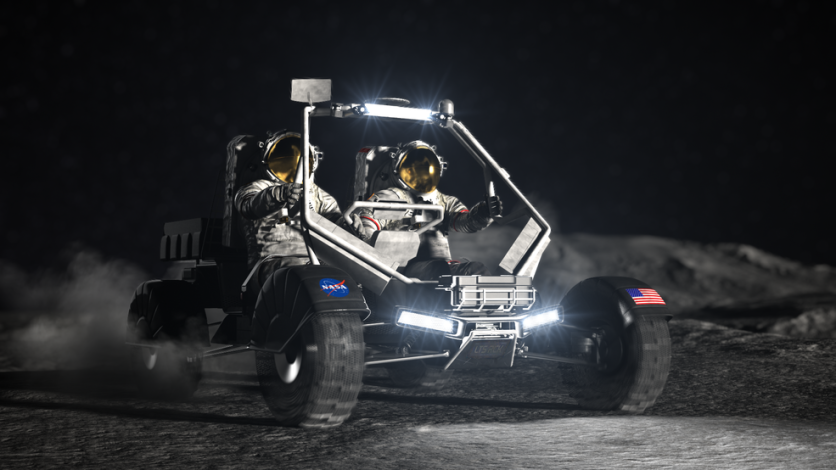NASA has announced its search for a lunar terrain vehicle (LTV) as it gears up for the upcoming Artemis missions, which will explore the south polar region of the Moon.
The agency is looking for industry proposals for a next-generation LTV that will enable astronauts to travel farther and conduct more scientific research on the Moon.
Unlike previous missions where NASA owned the rovers, this time the agency plans to contract LTV services from industry partners.
By doing so, NASA aims to leverage commercial innovation and provide the best value to US taxpayers while accomplishing its goals in human spaceflight and scientific exploration.

Riding on the Moon with LTV
The envisioned LTV will function as a hybrid between the Apollo-style lunar rover and the uncrewed rovers used in Mars missions. It will serve as both a mobile science exploration platform, similar to NASA's Curiosity and Perseverance rovers, and a vehicle driven by astronauts.
This design will enable continuous scientific research on the lunar surface even when crews are not present. Astronauts will use the LTV to traverse the moon, transport scientific equipment, and cover greater distances during each moonwalk.
Under the Lunar Terrain Vehicle Services request for proposals, companies interested in developing and demonstrating the LTV must meet the specified requirements.
The aim is to encourage the production of an innovative rover that can be utilized by NASA and other commercial customers over multiple years.
To operate effectively in the unique environment near the lunar South Pole, where there are permanently shadowed regions and extended periods without sunlight, the LTV must incorporate various systems.
These include advanced power management, semi-autonomous driving, state-of-the-art communication and navigation, and safeguard against the extreme lunar conditions.
Companies submitting proposals are expected to provide comprehensive services that cover the entire process, encompassing development, delivery, and operations on the lunar surface.
Each rover must possess the capability to transport two astronauts wearing suitable gear, incorporate a robotic arm or mechanism to facilitate scientific exploration, and withstand the harsh temperatures encountered at the lunar South Pole.
Furthermore, the company will be required to successfully demonstrate the functionality of the LTV in the lunar environment before deploying it for crewed missions.
Deadline for Contract Proposals
NASA has plans to utilize the LTV for crewed operations, commencing with the Artemis V mission in 2029. Before astronauts arrive, the rover will be utilized for uncrewed tasks and commercial endeavors once it touches down on the lunar surface.
The deadline for LTV services contract proposals is July 10, 2023, with the contract award set for November 2023. As part of the Artemis program, NASA seeks to investigate the Moon for scientific advancements, economic opportunities, and as a stepping stone for future Mars missions.
NASA will also transport the first woman and first person of color to explore the Moon.
Related Article : NASA Will Land On The Moon For The First Time in 50 Years l Here's Everything You Need To Know About Artemis 1

ⓒ 2025 TECHTIMES.com All rights reserved. Do not reproduce without permission.




